Don’t Let EMV Chargebacks Cut into Your Profits
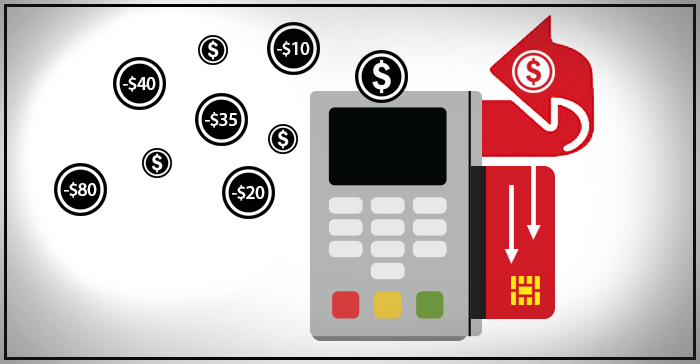 With EMV in full swing in the U.S., chargebacks have been on the rise – especially for restaurateurs. Following a successful co-hosted webinar with National Restaurant Association on the basics of chargeback management and best practices last month, we discovered a second installment was in high demand.
With EMV in full swing in the U.S., chargebacks have been on the rise – especially for restaurateurs. Following a successful co-hosted webinar with National Restaurant Association on the basics of chargeback management and best practices last month, we discovered a second installment was in high demand.
The webinar took a deeper dive into the rules of EMV and chargebacks and what you can do to avoid them. If you weren’t able to join us for the presentation, we’ve summarized the high points here to help you better understand chargebacks and the liability shift.
Why EMV, Why Now?
Protecting yourself against counterfeit fraud is one of the main benefits to implement EMV because it’s virtually impossible to recreate the chip. The October 1, 2015 shift has caused some serious headaches, but the ultimate goal is to fix the payment ecosystem by heightening card security. There is, however, a glitch—if your equipment isn’t EMV-compatible, then use of a fraudulent EMV card can go undetected.
Direct Part Marking (DPM) Explained
 While most barcodes you come across are printed on a label or paper-packaging of a product, in the manufacturing world and work-in-process applications many parts or components need to be marked with a barcode directly. Direct Part Marking is a process that allows  users to mark a barcode directly on an item instead of printing the barcode on a label.
While most barcodes you come across are printed on a label or paper-packaging of a product, in the manufacturing world and work-in-process applications many parts or components need to be marked with a barcode directly. Direct Part Marking is a process that allows  users to mark a barcode directly on an item instead of printing the barcode on a label.
There are 3 main technologies available for DPM:  laser or chemical etching, dot peening  and ink jet printing. Each of these has specific  advantages  and disadvantages  in terms  of durability, cost and ease of reading.  The main advantages  of codes with  DPM technology are that  the code is permanently marked  on a surface and will  survive  for a long  time  (ideally  forever), regardless  of the  stress the part is passing  through during its’ life cycle. The main  reasons to choose codes with  DPM technology are:
- Items that need to pass through harsh testing processes  (chemicals  agents, thermal cycles, oil, moisture, etc.)
- Items that need to  be tracked  during  their  entire life cycle
- Very small items (difficult to label)
DPM technology was first  adopted  mainly  by the automotive and general mechanical industries. Currently, the popularity of codes using  DPM technology has spread into  different sectors  including electronics, chemicals  and healthcare  industries.
House of Fraser Takes Control of Price Management with Datalogic’s Skorpio X3
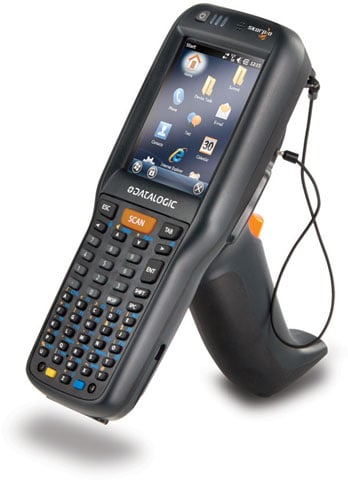 Datalogic has announced that premium United Kingdom department store, House of Fraser, is using Skorpio X3 mobile computers to improve the price management processes.
Datalogic has announced that premium United Kingdom department store, House of Fraser, is using Skorpio X3 mobile computers to improve the price management processes.
House of Fraser, owned by Nanjing Xinjiekou Department Store Co. Ltd., a leading chain of Chinese department stores, purchased 290 Skorpio X3 devices following an extensive pilot program run in its Glasgow and Bristol stores with Datalogic business partner Capgemini.
The primary function for the mobile computers is to aid and improve price management processes. Paired with a mobile label printer via the integrated Bluetooth communications on the Skorpio device, employees can price check items and then print accurate clearance labels on the shop floor, affixing them to items within seconds. “The ability to price check and print on the spot enables us to more accurately and efficiently prepare for sale periods and provides our customers with a clear and professional presentation of the item price that minimizes queries and reduces checkout times,â€Â - Fred Jefferiss, Commercial Finance Controller at the House of Fraser.
Zebra Brings Modern Wi-Fi to Moscow’s Gorky Park
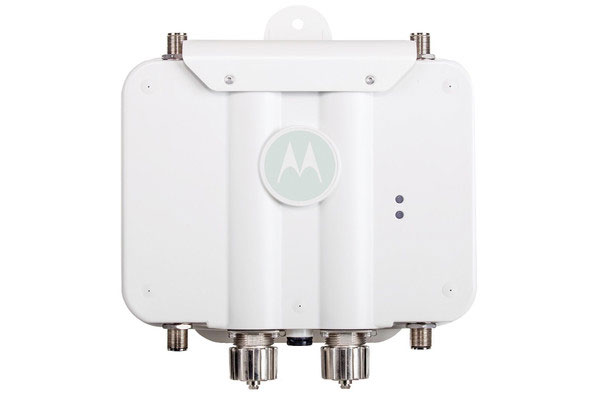 Moscow’s Gorky Park has recently deployed a wireless network solution from Zebra to enable thousands of visitors to the park to simultaneously access wireless connectivity for a first-class visitor experience. The new Wi-Fi infrastructure replaces a legacy network which was failing to meet the latest requirements across the parterre section of the Park and cope with bring-your-own-device (BYOD) demand. The new wireless network provides robust security and delivers reliable, seamless coverage of the 68.9 hectare park.
Moscow’s Gorky Park has recently deployed a wireless network solution from Zebra to enable thousands of visitors to the park to simultaneously access wireless connectivity for a first-class visitor experience. The new Wi-Fi infrastructure replaces a legacy network which was failing to meet the latest requirements across the parterre section of the Park and cope with bring-your-own-device (BYOD) demand. The new wireless network provides robust security and delivers reliable, seamless coverage of the 68.9 hectare park.
Utilizing AP6562 access points across outdoor and indoor locations in the park, Zebra WiNG architecture was installed to provide a quality Wi-Fi service based on the number of mobile clients in different areas across the park. The design support for thousands of mobile devices allows visitors to use enterprise-grade Wi-Fi at an almost unlimited speed in both 2.4 and 5 GHz bands through a distributed WiNG architecture which prevents bottlenecks or connection losses. Visitors experience seamless high-speed Wi-Fi roaming on a secure network that protects their devices and the entire network from hacking. As a result, visitors to the Gorky Park can use a variety of online resources and social media as well as high-bandwidth applications like YouTube and Skype with confidence.
4 Signs Your Warehouse Needs a Barcoding System
 Picture this…Employees are wandering the aisles of your warehouse, trying to find an inventory item to complete a shipment that must go out today. Unfortunately, the item appears to be either out of stock or has been placed in the wrong section of your facility. The problem is your manual records are incorrect so you have no way of knowing.
Picture this…Employees are wandering the aisles of your warehouse, trying to find an inventory item to complete a shipment that must go out today. Unfortunately, the item appears to be either out of stock or has been placed in the wrong section of your facility. The problem is your manual records are incorrect so you have no way of knowing.
The bottom line…Quickly locating and picking inventory is a challenge. And your current equipment and processes are not helping matters.
If this sounds all too familiar, you are not alone. In fact, a recent research study has shown that inefficient workflows cost companies nearly 3,000 productive hours and $390,000 in mispicks every year. That’s a lot of time and money down the proverbial drain.
In addition, improper warehouse management means you could be missing valuable business insights, which could help you make more informed decisions to improve the overall health of your company and avoid the above scenario.
That’s where a barcoding system comes in; it empowers you to put away the pencil and paper and forget about spreadsheets. A barcoding system is a powerful tool that reduces the piles of paperwork, decreases user error and provides critical information in real time. And it doesn’t matter whether you are a small single-store business with a warehouse in the back or a large manufacturer with several distribution centers barcoding fills in accuracy gaps that can significantly improve inventory control.
Not convinced? Your operations might be experiencing the following challenges that a barcoding system can solve:
Continue reading »
Datalogic’s Skorpio X3 Streamlines Processes and Improves Efficiency at SuperGroup
 Overview
Overview
UK Fashion Retailer SuperGroup Plc offers quality clothing and accessories through e-commerce, a multi-channel network of stores and wholesale operations. In 2003, the company owner joined forces with a UK designer to develop and create a new in-house brand known as Superdry. This brand offers a wide range of clothing, bags and accessories. It has a wide appeal, capturing elements of “urban” and “street wear” designs with subtle combinations of vintage Americana, Japanese imagery and British tailoring, all with strong attention to detail. 135 UK and European stores, as well as celebrity publicity from David Beckham and Zac Efron, has driven Superdry to become an internationally acclaimed fashion brand sold in over 100 countries.
The Challenge
The popularity of Superdry grew the number of stores at a rapid rate, straining operations. This began to impact sales, as accurate and up-to-date information on inventory was not available. Keeping this in consideration, Superdry decided to upgrade their systems for POS and inventory management. The new automation system would include: hardware for shelf replenishment, inventory management and fast service at the point of sale. All these applications would be performed precisely and quickly on a handheld device to boost efficiency and enhance the shopping experience for customers. Continue reading »
Hermes Invests in Zebra Solutions to Improve Delivery Experience
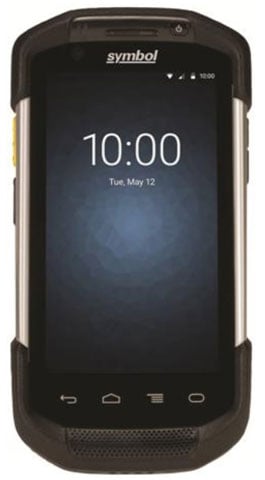 Hermes, the consumer delivery specialist, has invested in state-of-the-art handheld scanners in what represents one of the largest mobile implementation projects in Europe. The company will equip its local courier network and myHermes ParcelShops with more than 20,000 TC75 mobile computers from Zebra, in a move designed to heighten the overall customer experience it provides on behalf of the UK’s leading retailers.
Hermes, the consumer delivery specialist, has invested in state-of-the-art handheld scanners in what represents one of the largest mobile implementation projects in Europe. The company will equip its local courier network and myHermes ParcelShops with more than 20,000 TC75 mobile computers from Zebra, in a move designed to heighten the overall customer experience it provides on behalf of the UK’s leading retailers.
These new enterprise-grade handheld devices and the software which powers them will provide greater visibility during the delivery process as the company moves toward its goal of 100% first-time delivery success. The 4G TC75 devices have a 10-hour battery life, a built-in camera to capture high-quality photos and boast improved GPS functionality. This allows geo-fencing technology to provide pin-point accuracy for delivery, which means parcels are satellite-tracked to the customer’s doorstep.
TTL and True RS-232 Serial – What’s the Difference?
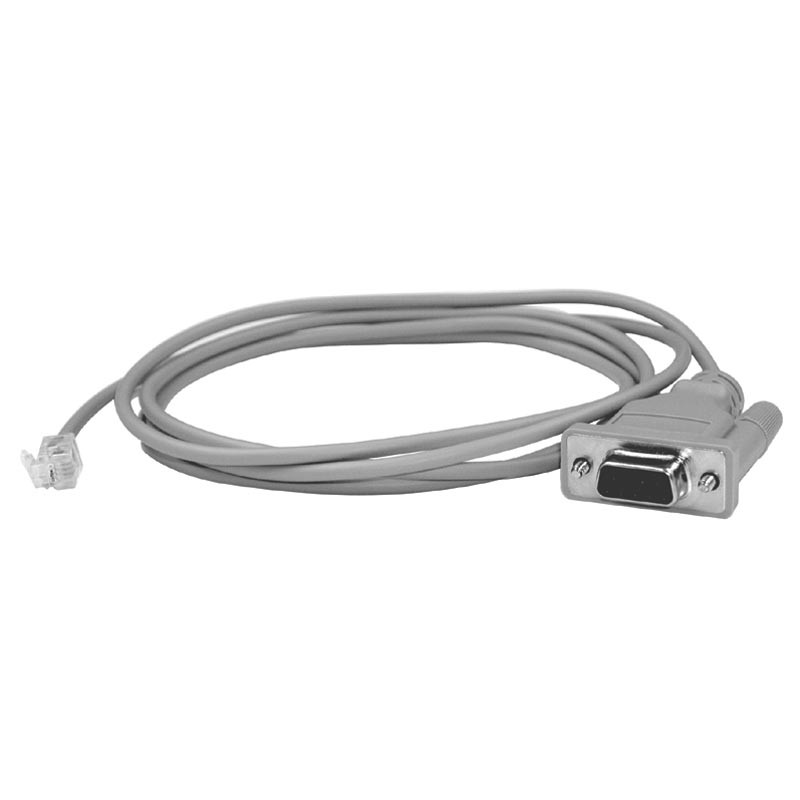 The differences between a TTL RS232 and a True RS232 interface purely have to do with data being sent, not with powering the barcode scanner. The data is being sent as an electrical block-signal representing a sequence of logical zero’s and ones.
The differences between a TTL RS232 and a True RS232 interface purely have to do with data being sent, not with powering the barcode scanner. The data is being sent as an electrical block-signal representing a sequence of logical zero’s and ones.
- For a TTL device a zero would ideally be 0 volt, and a 1 one would ideally be 5 volt. The receiving device therefore has to decide whether a the signal at a given time is meant to be 0 or 5 volt, in order to tell if it is looking at a binary zero or a binary one.
- For a True RS232 device the zero is represented by ideally -12Volt and a one is represented by ideally + 12 Volt. Here the receiving device has it a bit easier because the difference between -12 and + 12 = 24 Volt. (specification allows -5 to -15V and +5 to +15V)
In practice we see that a signal gets weaker the longer it has to travel and can sometimes drop 1 volt a meter going via cable from device to host. With a True RS232 device both positive and negative signal can drop 10 volts and still have 4 volts difference in polarity left to tell zero’s from ones. The TTL interface has already less polarity difference if the signal drops just 2 volts.
Empowering Healthcare Providers with Honeywell’s 1900h Series Imagers
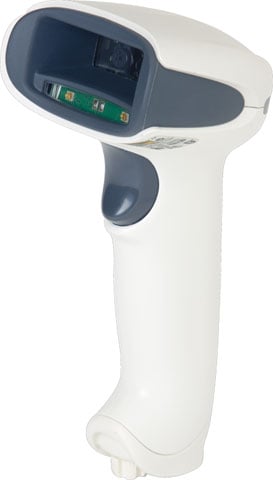 With the ever changing healthcare landscape, hospitals are constantly under pressure to  consistently perform to always evolving regulations. Add to this that many hospitals are being forced to do more with less staff and you have a genuine need to improve the efficiency and accuracy of every process from identifying patients and accessing electronic medical record data to general bedside care.
With the ever changing healthcare landscape, hospitals are constantly under pressure to  consistently perform to always evolving regulations. Add to this that many hospitals are being forced to do more with less staff and you have a genuine need to improve the efficiency and accuracy of every process from identifying patients and accessing electronic medical record data to general bedside care.
Providing hospital staff with the right barcode scanner is a simple step to take to empower them to do more with less. Honeywell is leading the way with a line of scanners designed specifically to meet the needs for healthcare applications.
All of these scanners provide full decoding of any 1D, 2D, and Stacked barcodes and have disinfectant-ready housings that will handle daily cleaning without ever effecting performance.
Xenon 1900h Area-Imaging Scanner
- Corded Scanner – USB, PS/2, RS232, and IBM 46xx options
- Custom Sensor Optimized for barcode Scanning
- Laser-Free Solution
Xenon 1902h Wireless Area-Imaging Scanner
- Cordless Scanner
- Long-Lasting Lithium-Ion Battery with Tool-Free Access
- Flexible Radio Power Management
- Vertical Base
- Laser-Free Solution
Tips: Pairing Your TSP650II BTi with an Apple iPad
Apple MFi certified, Star’s TSP650II BTi receipt printer is the perfect solution to add receipt printing to your iPod Touch, iPhone or iPad based point-of-sale system. With operating system support for iOS, Android and Windows, the TSP650II BTi features the best of both worlds by coupling the comfort of legacy products with the speed and connection options demanded today in fast-paced point of sales environments.




